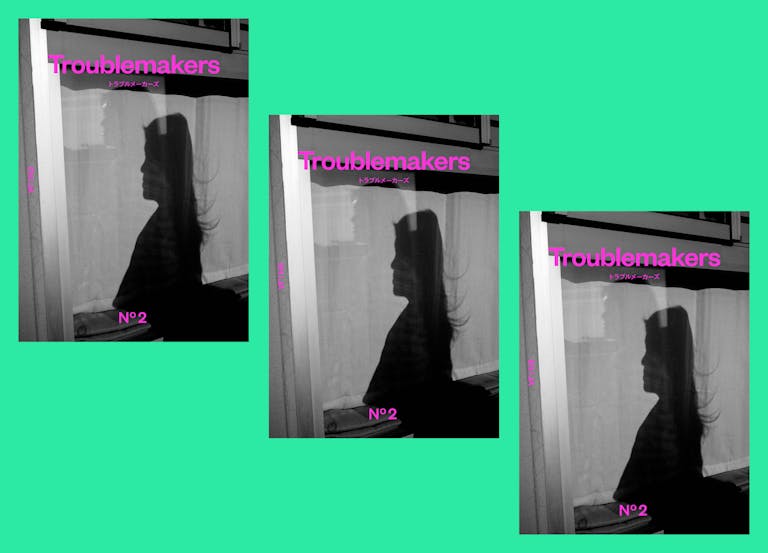Behind the scenes: Pecan magazine
There are lots of independent travel magazines around at the moment, all of them taking a left-of-field look at the travel experience. And yet Pecan magazine still manages to stand out from the crowd.
From the cover (a solid block of neon pink, which on closer inspection has transparent spot UV cover lines) to the editorial policy, which paints a picture of Paris through its launderettes, croissant bags and empty corners, there’s a wilful desire to do things differently. And yet certain staples of the city guide remain, such as the directory of recommended places and “That Obligatory Piece on Coffee”.
I caught up with editor Jaimie Stettin to talk travel, soft suggestions, and crimes against selling magazines.

You refer to Pecan as “a lyrical guidebook” – what does that mean to you?
Pecan started out of an on-going conversation that my co-creator and I had when we travelled. It was based around the frustrations of using guidebooks, and the limitations that are inherent when you have a book that gives you a list of places to go.
Our ambition was to create something that’s not as closed as a guidebook, so Pecan is much more open and gives you starting points rather than end points. It allows you to create your own experience of a place.
So that’s why you have the contact details in the back, for example, because these are the places to start from.
Right. We struggled a bit wondering whether we should include a list of our favourite places because we’re saying lists are so limiting, but we’re making them soft suggestions. Your experience of Paris shouldn’t be limited to our humble list of preferred spots.

There’s an obvious desire to do things differently with the cover too. Not only do you not have a picture of Paris, you’ve made the cover lines almost invisible!
We played with the idea of having an image on the cover, but again there’s the problem of limiting your vision – do you put one photo on the cover, and if so how does that one picture represent all your content?
So we nixed the photo idea. And we also liked the idea of a solid colour on the cover – my partner Hanah and I have been to a lot of bookstores and we’ve spent a lot of time looking at a lot of magazines and art book covers, and the solid colour is something that felt a lot more art book rather than magazine, and that’s definitely the direction we wanted.
We also wanted to be bold and subtle at the same time, and I think that’s how we ended up with the neon pink cover but with these transparent spot UV letters, so at first glance all you see is this block of very bright pink, and you have to get close and move it around to see the effect. And even when you see the letters you don’t know right away they’re the names of the artists, so there’s this nice delayed gratification that comes from blending the bold with the subtle, or the shocking with the subdued.

A mainstream publisher would hold this up as an example of the worst crimes against selling magazines. Are you concerned about the cover hurting sales, or are you more interested in making this as an art book pure and simple?
In essence it’s an art book and we don’t want to compromise our artistic and creative vision. But on the other hand of course we’re trying to be practical and commercially minded, and I do want lots of people to see this magazine and buy it and have it in their homes.
So while I’m aware this might technically be a crime against selling magazines, I think it’s maybe a Robin Hood type of crime. We’re all very used to seeing a certain kind of magazine on the shelves, and there are certain trends, especially now in the indie magazine scene. And there are lots of lovely cover designs out there, but I think we were ready to push the boundaries a little.
Maybe that means we won’t fit into certain shops because the aesthetic is a little too loud, but I think it’s exciting and I think we were able to be a little bit fearless with this first issue. So maybe it was a crime, but if so it was a crime I was happy to commit. I don’t regret it.

And nor should you! Do you mind me asking how many copies you printed of this one?
Sure – we went for a modest 500 for this first batch.
And where do you want to go with the magazine? What are your aims and ambitions?
To be in a lot of different cities around the world. Even though each issue is going to be based in a different city and I imagine the feature city is going to want that issue more, I’d like to see us create a following of people who are interested in the magazine wherever we go.
So I’d like to build strong footholds everywhere, and that’s part of the process. By basing each issue in a different city it’s like creating little communities or groups of friends in each place, and that’s one of the most exciting parts of what we’re doing.
—
Want more alternative travel? Read our interviews with the editors of Boat, Cereal and We Are Here, all delivered by Stack






